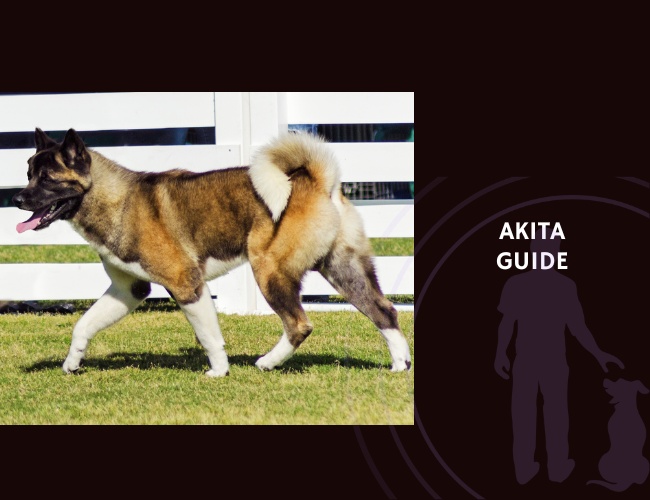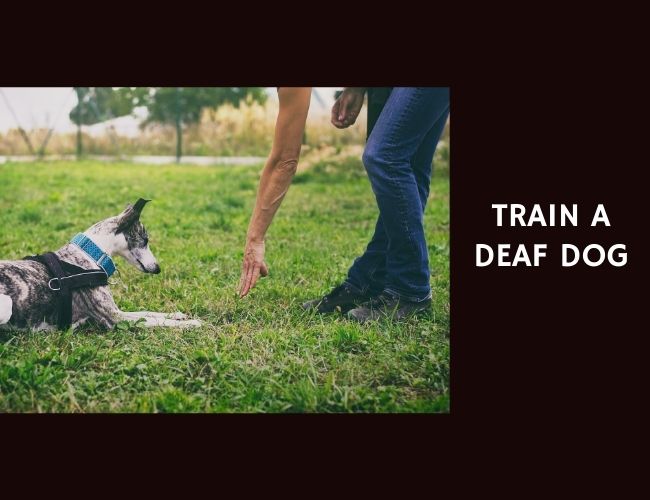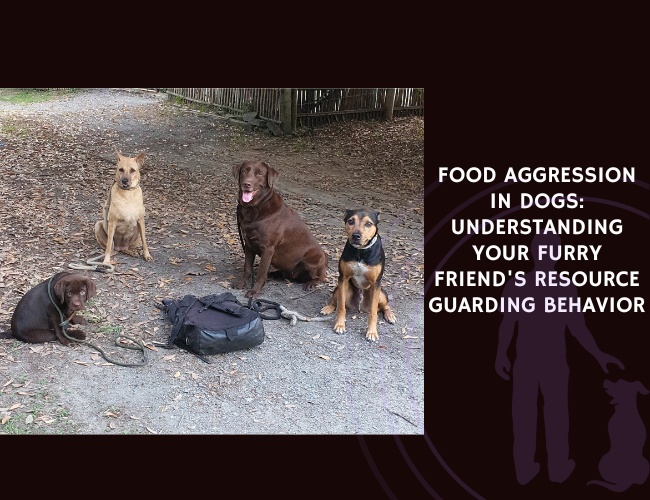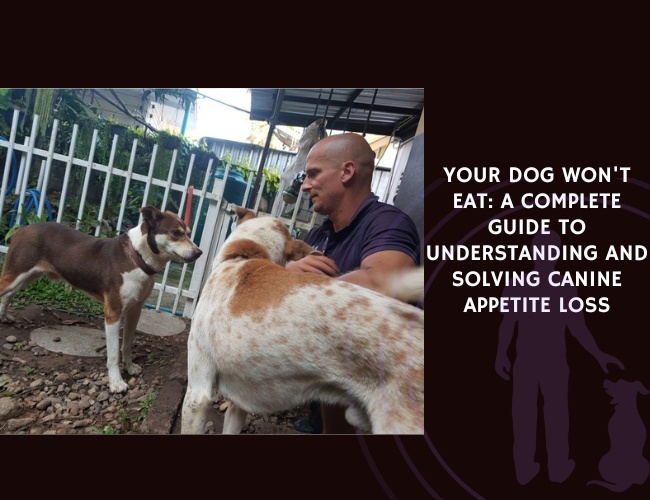Introduction to the Akita Breed
Origins and History
The Akita has a storied history rooted in the mountainous regions of northern Japan. Originally, these dogs were bred for hunting large game, including boar, deer, and even bears. Over centuries, their roles also shifted to guarding properties and serving as loyal companions in Japanese households. The breed’s independent nature, strong survival instincts, and determination have been shaped by these demanding roles. Akitas are recognized as national treasures in Japan, symbolizing loyalty and strength.
Distinctive Physical Characteristics
The Akita stands out as an impressive, powerful dog. Adults are large, muscular, and have a sturdy bone structure. Their heads are broad with deep-set eyes and upright, triangular ears, lending a dignified and alert expression. The breed’s thick double coat is one of its most defining features, providing protection from harsh weather. Coat colors can range from white, brindle, red fawn to sesame. A signature curled tail adds to the breed’s unmistakable silhouette.
Akitas move with a confident, steady gait. Their sturdy legs and strong bodies hint at their historical ability to traverse rugged terrain. These traits are not just physical – they carry over into the Akita’s personality as well.
Understanding Temperament Before Ownership
Owning an Akita is not for everyone. Their temperament is as striking as their appearance and requires careful consideration. Akitas are deeply loyal to their family but tend to be reserved or even aloof with strangers. This trait makes them reliable guardians, but also means visitors may misinterpret their demeanor.
Independence is a core part of the Akita’s personality. Unlike many Western breeds, Akitas have less need for continual social interaction and do not always seek physical affection. Their emotional expressiveness is more subtle, demanding owners who can respect their space and understand their signals.
Before adopting an Akita, you should be ready for a dog that values consistency, calm leadership, and clear boundaries. Their independent thinking and sometimes stubborn nature mean training requires patience and purposeful, positive methods. Understanding these traits is key to a healthy, rewarding relationship.
As we dive deeper into what makes Akitas so unique, getting to know their core behavioral patterns offers a solid foundation for anyone considering this striking breed.
Character and Behavioral Traits
Roots of Independence and Territoriality
The Akita’s personality is strongly shaped by its history as a Japanese hunting and guarding dog. This heritage has instilled a powerful sense of independence. You’ll notice these dogs like to assess new situations on their own before responding. They aren’t usually eager to please just anyone, and their self-preserving instincts are ever present. Because of their natural territoriality, Akitas are highly tuned to their environment and will defend their home and family if they sense a threat. They’re rarely impulsive, choosing instead to quietly observe changes around them before reacting, making them reliable but sometimes intense protectors.
Loyalty Paired with Aloofness
If you’re hoping for a dog that showers you and every guest with excitement, the Akita might surprise you. Their loyalty to family is undeniable—they’re fiercely devoted to their chosen people and will bond deeply. But this devotion doesn’t extend to strangers. Instead, Akitas keep a polite distance and won’t greet new faces with wags and kisses. It’s not hostility but a reserved nature, reflecting their roots as guardians who once needed to be selective about trust. They avoid unnecessary attention and generally do not welcome hugs or close contact from outsiders. Their signals of affection are subtle but meaningful to those within their circle.
Navigating Intra-sex Aggression
Akitas are known for being selective with other dogs, particularly those of the same sex. While some individuals may get along with opposite-sex companions, intra-sex aggression is not uncommon. This means careful introductions, ongoing supervision, and thoughtful management are a must for any Akita living with or meeting other dogs. Inter-dog tolerance is usually low, so understanding this trait is essential for safety and harmony at home.
Emotional Expression: Quiet Strength
Compared to Western breeds, Akitas are emotionally self-contained. They don’t display their feelings with big, overt gestures. Instead, they communicate with small, subtle cues—a flick of an ear, a turn of the head, or soft eye contact. This limited emotional expressivity can make it tricky to know how your Akita feels, so attentive observation becomes an important part of living with them. Expect to earn their trust and take time to learn their unique language.
By understanding these traits, you are laying a strong foundation for a successful partnership with an Akita. This knowledge guides how you interact with them and ensures your relationship is built on respect, safety, and trust.
Training and Education Approaches
Training an Akita means working with a breed known for its independence and strong will. A good training plan respects these traits while building a trusting bond. It’s not just about teaching commands—it’s about finding a path that makes sense to your Akita.
Calm Leadership and Consistency
Akitas need calm, steady leadership. Loud voices or unpredictable corrections can make them anxious or withdrawn. It’s important to use a firm but kind approach every day. Provide clear, consistent boundaries. When rules always stay the same, your Akita will start to understand what is expected, making life calmer for both of you.
Purposeful, Instinct-Aligned Training
Akitas may ignore exercises they find pointless, but will shine when training matches their instincts. For example, they respond well to scent work, tracking games, or tasks that tap into their natural alertness. Physical and mental challenges that feel meaningful encourage your Akita to engage actively.
Keep sessions short and finish on a positive note. If your Akita succeeds, offer rewards and praise! This makes learning enjoyable, reducing the risk of frustration for both dog and owner.

Positive Reinforcement and Avoiding Force
A gentle approach delivers results. Akitas don’t respond well to punishment or harsh corrections. Instead, use positive reinforcement—think treats, toys, or kind words. Avoid any force, as this can cause fear or defensive behaviors. Encouragement and calm correction help build trust and a stronger relationship.
Stay consistent with rewards and boundaries. Akitas take longer to develop reliable recall than some breeds, so patience is key. Keep using encouragement, even when progress feels slow.
Proactive Socialization
Socialization must begin early. Carefully introduce your puppy to a variety of people, places, and sounds. Because Akitas can be reserved or wary, these experiences help build confidence without overwhelming your dog. Exposure to different situations reduces potential aggression and makes outings easier for everyone.
Make each new encounter positive and controlled. Limit interactions with unfamiliar dogs, especially those of the same sex. Focus on quality, not quantity, of social experiences to help your Akita become a confident, stable companion.
Through understanding and well-planned training, you set the stage for a rewarding partnership with your Akita. With the foundation of calm leadership, you’ll be ready to explore the next phase of meeting your Akita’s daily needs and lifestyle.
Nutritional Requirements and Recommendations
Moderate Energy, High Protein Diet
Akitas are strong, active dogs, but don’t let their size fool you—they actually have moderate energy needs. This means they don’t require as many calories as some breeds of similar size. Their bodies do best with high-quality protein, which helps maintain their impressive muscle mass and lean body structure. For an adult Akita, a diet with about 25-35% protein is usually ideal. Puppies can thrive on slightly lower protein levels, around 22-32%. By choosing minimally processed, lean protein sources like fish, chicken, or lamb, you support their strength and energy without overfeeding.
At the same time, limiting fat is key. Adults usually do well with 12-15% fat content, while puppies may tolerate up to 17%. This balance supports their bodies without putting stress on the joints or leading to weight gain, which is especially important for Akitas because extra pounds can increase the risk of hip and joint problems later in life.
Navigating Food Sensitivities
Many Akitas have food sensitivities, especially to certain grains and low-quality protein sources. Reactions can include itchy skin, upset stomach, or even allergic responses. That’s why it’s important to avoid grain-heavy foods and stick with premium ingredients that are gentle on the digestive system. If your Akita shows signs of discomfort like frequent scratching or digestive issues, work with your vet to identify and eliminate possible triggers. A simple, ingredient-controlled diet is often the best way to go—think whole meats, sweet potatoes, or brown rice in moderation.
Essential Fatty Acids and Zinc
Lean, strong muscles and a plush coat are hallmarks of the Akita breed, and both need balanced fatty acids to stay healthy. Omega-3 and Omega-6 fatty acids help keep their skin and coat in top shape, which is crucial, especially if you live in a drier climate. Regularly checking and, if needed, supplementing these can reduce shedding and skin problems.
Another dietary note for Akita owners—some bloodlines may be prone to zinc-responsive dermatosis. This means they can’t absorb zinc as well, leading to flaky or irritated skin. If your Akita develops skin issues, your vet may suggest a zinc supplement for added support. Regular vet checkups and a proactive approach can help you spot and manage these needs early on.
Making thoughtful nutrition choices for your Akita keeps them strong, healthy, and happy. Their well-being is boosted by the right food, but it’s also affected by their overall environment and healthcare practices, creating a well-rounded picture of care.
Silent. Strong. Sovereign.
Built for resilience.
The Akita isn’t bred for obedience alone—it’s bred for judgment. Every instinct in this breed whispers independence. Their strength is silent, their watchfulness unshaken. You don’t command an Akita; you collaborate.
Loyal without loudness.
They won’t greet you with wags and wiggles. But when you earn their trust, they’re with you for life—calm, collected, and unwavering. Affection shows in presence, not performance.

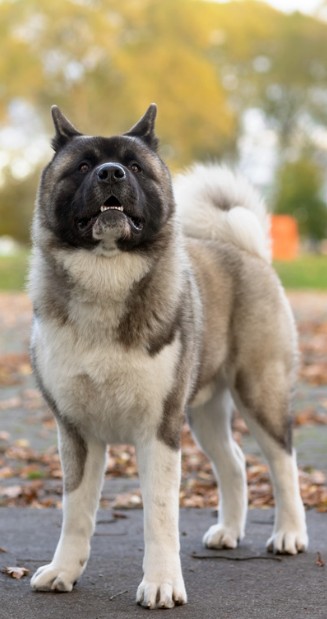
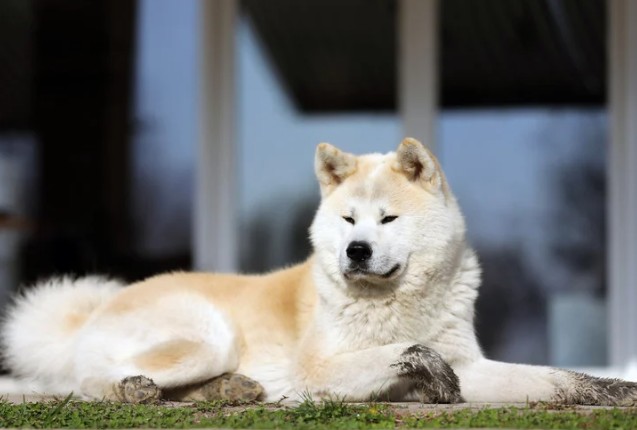
Dignity demands respect.
Akitas don’t tolerate chaos, inconsistency, or forced affection. Give them order, give them space, and they’ll give you the rarest of gifts: a partnership founded on mutual regard, not neediness.
Health Concerns and Genetic Predispositions
Autoimmune Disorders and Disease Risks
Akitas have a genetic background that makes them more likely to develop certain health problems. One of the most notable risks in this breed is their higher-than-average susceptibility to autoimmune disorders. These include conditions such as Vogt-Koyanagi-Harada (VKH)-like syndrome and sebaceous adenitis. VKH-like syndrome can affect the skin, eyes, and nervous system, and often leads to pigment loss and eye discomfort. Sebaceous adenitis leads to skin changes, including hair loss and flaky patches. Regular checkups with a veterinarian specializing in autoimmune concerns are essential for early recognition and care.
Common Hereditary Conditions
Like many large breeds, Akitas are prone to orthopedic problems. Hip dysplasia is common and may cause pain or lead to arthritis as the dog ages. Joint health should be managed both through regular veterinary visits and proper diet. Progressive retinal atrophy (PRA), an eye condition that can cause blindness, is seen in some Akita bloodlines, highlighting the importance of breeding from health-tested parents.
Another major concern is hypothyroidism, where the thyroid gland produces fewer hormones than the body needs. Symptoms may include hair loss, lethargy, and weight gain. With prompt diagnosis and medication, most Akitas with hypothyroidism can live comfortably. Gastric dilatation-volvulus—also known as bloat—is a life-threatening emergency to be aware of in deep-chested dogs like the Akita.
Vaccine Sensitivities and Genetic Screening
Akitas can have heightened sensitivity to vaccines or stress on the immune system. This means that they may develop side effects more easily than some other breeds. It’s important to work closely with a veterinarian who is experienced with Akitas to tailor a careful vaccination schedule.
Genetic screening of breeding dogs is strongly recommended. This process helps breeders avoid passing on hereditary problems within the breed. Responsible breeding and ongoing endocrine and dermatology checks can make a big difference in an Akita’s long-term health and quality of life.
Taking a proactive and informed approach not only keeps your Akita healthier but also supports a happy, active life as part of your family. This lays the foundation for a living environment where your Akita can truly thrive.
Ideal Living Environment and Lifestyle
Creating a Stable and Predictable Home
Akitas feel most comfortable in a calm, steady environment. Changes, chaos, or unpredictable schedules may cause stress in this breed. A stable household, with clear routines and consistent leadership, is the foundation for an Akita’s emotional well-being. Because of their independent nature and deep loyalty, Akitas do not need constant attention, but they do appreciate predictability and clear social roles. Consistency helps your Akita understand boundaries, reducing confusion and the risk of problem behaviors.
The Need for Secure Outdoor Spaces
It’s essential that Akitas have access to a secure outdoor area. Their natural instincts make them curious and vigilant, but these same traits mean they can escape if left in an unsecured yard. Fencing should be high enough and checked regularly for weaknesses. An ideal outdoor space lets your Akita safely exercise and observe their surroundings, while keeping them protected from hazards and other animals.
Exercise is also a big part of a happy Akita life. While they don’t have endless energy like some working breeds, Akitas benefit from regular walks, play sessions, and owner-guided activities. Think of activities like fetch, scent games, or a simple puzzle toy. These crafts not only work their bodies but stimulate the mind, reducing the risk of boredom.

Limiting Unsupervised Interaction with Other Dogs
Akitas are well known for their low tolerance for unfamiliar dogs, especially of the same sex. Unsupervised play or greetings in a dog park are risky and should be avoided. Instead, any dog-to-dog interactions should always be planned and closely watched. Introducing dogs gradually and reading their body language can help prevent misunderstandings and aggression.
Enrichment and Owner-Led Activities
Owner involvement is key when it comes to enrichment. Think task-oriented games, obedience training, or scent work designed just for your Akita. Puzzle toys that challenge them mentally are also a favorite. When enrichment comes from their trusted human, your Akita feels stimulated, included, and less likely to act out due to boredom .
Setting up the right environment for your Akita is one more way to ensure they feel safe, confident, and a valued member of your household. With a solid foundation of routine and thoughtful enrichment, every Akita can thrive.
Social Dynamics and Family Integration
Emotional Self-Containment and Family Bonds
Despite deep loyalty, Akitas are known for being emotionally self-contained. While many dogs seek constant physical affection, Akitas prefer to show love through their presence and watchfulness rather than hugs and cuddles. Their calm, alert manner shows they care about their family without being clingy. This emotional independence is a core breed trait, shaped by their origins as confident guardians. Akitas do not need constant reassurance to feel secure, but they do appreciate gentle routines and consistency with their humans. Respecting their need for space and patience helps build trust and mutual respect, laying the foundation for a strong family bond.
Navigating Relationships with Children, Visitors, and Pets
Akitas can thrive in homes with children if everyone understands the dog’s unique nature. They are best-suited for families with older children who know how to be calm and respectful. Young children may not read an Akita’s subtle boundaries, so supervision is always needed. Teach kids simple rules, such as avoiding rough play and respecting an Akita’s alone time.
When visitors come by, Akitas are often reserved and may stand back quietly rather than greet everyone at the door. This aloofness is not hostility, but rather their way of assessing new people. Set clear expectations for visitors. Inform them not to force interaction or reach over the dog’s head.
Interactions with other pets—especially dogs—should be managed carefully. Akitas are typically less tolerant of other dogs, especially those of the same sex. It is safest to supervise all introductions and avoid leaving your Akita alone with unfamiliar animals. Small pets, like cats, may be accepted if raised together, but always monitor closely, as Akitas have strong prey instincts.
Defining Roles and Boundaries
Akitas do best in a home where their role is clear. They respect structure and look to humans for consistent leadership. Establish household routines and use a calm but confident approach to enforce rules. Everyone in the home—including adults and children—should follow the same expectations to avoid mixed signals. Clear communication, predictability, and gentle consistency help your Akita feel secure and respected in the family group.
Understanding and managing social dynamics at home brings out the best in your Akita. With patience and structure, these majestic dogs become trusted companions and devoted, dignified family members.
Conclusion: Is an Akita Right for You?
Considering the Commitment
Owning an Akita is a major commitment. These dogs are not a casual choice for most families or first-time dog owners. Akitas bring deep loyalty, independence, and a bold personality that stands apart from other breeds. Before bringing one home, it’s important to weigh the time, space, and level of daily involvement you can provide.
You will need to offer calm, confident leadership and a stable environment. Akitas require purpose-driven training, gentle yet firm boundaries, and thoughtful social experiences. Their independence means a “pushy” approach or inconsistent rules can lead to stress or behavioral problems. For their physical and mental well-being, Akitas also need room to roam and regular, structured activities—especially enrichment games you lead.
Realistic Expectations
Akitas bond deeply with their families but remain emotionally self-contained. This means they do not crave or give constant attention in the way some Western breeds might. Instead, their affection is steady and subtle. You may have to pay closer attention to their quiet signals and trust grows over time.
These dogs can be aloof with unfamiliar people and often do not get along with other dogs of the same sex. Akitas are not well-suited for dog parks or chaotic, high-energy homes. Careful introduction and supervision are vital if you have children or other pets.
The breed’s unique health concerns—like autoimmune disorders and food sensitivities—require owners who are willing to collaborate closely with veterinary professionals. Expect regular health screenings and a tailored diet plan. Additionally, you must be proactive about socialization, exercise, and mental engagement throughout all life stages.
Resources and Support
If you feel ready, support can make your journey smoother:
- Connect with local Akita clubs and online forums.
- Seek out knowledgeable breeders and veterinarians who understand Akitas.
- Explore books and breed-specific courses for ongoing information and guidance.
- Consider reaching out to experienced Akita owners for real-life tips and advice.
Choosing an Akita means welcoming both their strengths and their challenges. With respect, patience, and dedication, you can build a beautiful partnership with this remarkable breed.

